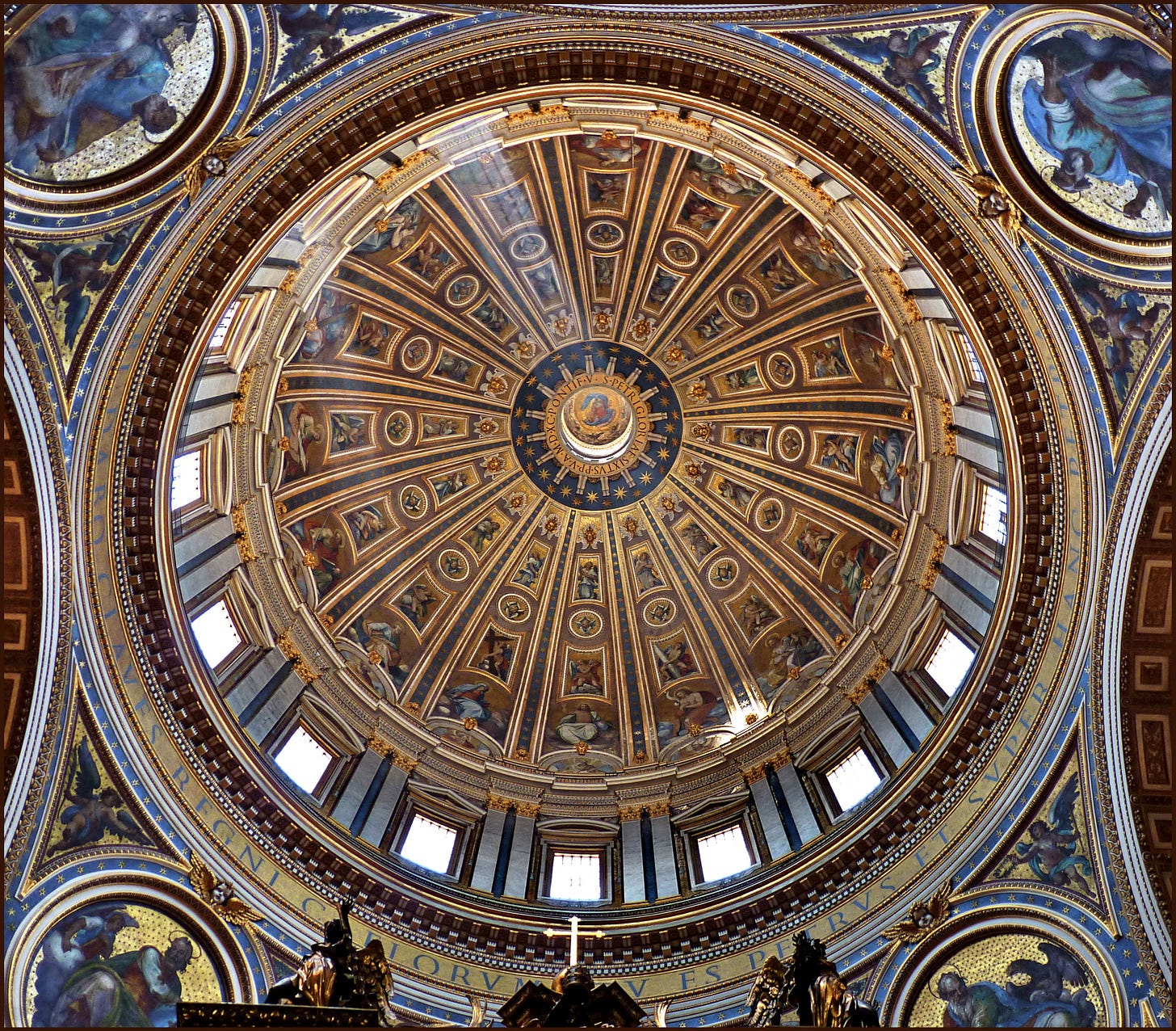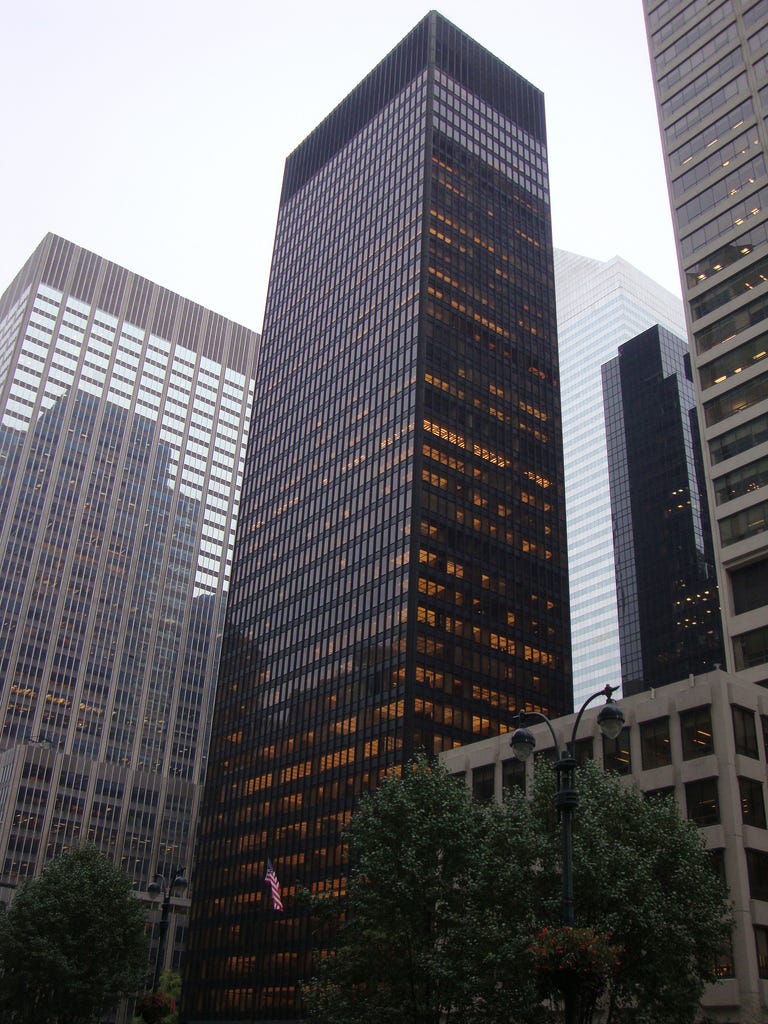The Music of Architecture
Of all the arts, architecture is the most prevalent and necessary. Shelter stands beside food, water, and fire as the basest need. Society cannot exist without buildings, yet, paradoxically, buildings can survive for millennia without society. This makes architecture the most permanent and visible expression of a culture. In most cases, it is the only expression remaining of a culture. Yet, in this enlightened age, we neglect and mock it.
Architecture stands as the artistic antithesis of music. Music is fixed in time and permeates space. Architecture, on the other hand, is fixed in space and permeates time. Music is instantaneous, and—when properly performed—ethereal, giving the listener a rapturous sense of harmony and completeness. But only for a second. Architecture, when properly executed, gives the perfect compliment to music. Good architecture creates a satisfying sense of perspective in relation to the world, civilization, and history. It does not fade out once perceived, but instead, continues on long after our death. Whereas good music is entirely contingent on a master producing each note every time, architecture is incidentally contingent. The preservation of architecture does not require the preservers to share in the artistic vision or talent of the original builder
.
This makes architecture and music perfect compliments. Combining the two creates a sense of eternity, a fleeting glimpse of perfect perspective and harmony which delights the mind; past, present, and future seem to occur in one moment, forever. This is why architecture and music are so important to religion. And, as I will discuss later, why the decline of architecture (and music) is partially to blame for the decline of religious sentiment in the West.
I am starting this blog to argue, from an amateur’s perspective, that we should not neglect the places that we spend nearly every hour of our modern lives. I say that, in opposition to most, buildings should be the least utilitarian objects in our lives. What becomes of the building when its utility is ignored? Or rendered obsolete? Then its value lies almost exclusively in the land it occupies and its appearance. And even when ‘properly’ used, surely a beautiful building is superior to an ugly building, all else equal. It seems that we are making ourselves needlessly miserable because we have convinced ourselves there is some ‘material’ or economic gain by refusing to construct beautiful buildings. I will also address this fallacy in greater detail in the future.
I have not attended architecture school, so I am far from an ‘expert’ in this field. Though as far as I can tell, the ‘experts’ are vandals and the ‘uncultured’ are geniuses. Their work is a monument to their arrogance and narcissism. It takes no genius to design a cage.
I am coming at this from a different perspective, an outside perspective. Perhaps this un-initiated and ignorant perspective is just what is needed. I also hope to both expand my knowledge and refine my thoughts through the process of writing. I hope I can also help others clarify their thoughts. I seem to encounter many people who dislike modern art, yet they cannot articulate their own distaste. That does not mean their distaste is wrong, as the architects would like to assert, but that their distaste is deep, deeper than mere intellectual opposition. It is innate.
I am not, however, entirely unacquainted with architecture and art. I am a realtor in Austin, so architecture is omnipresent in my line of work. I studied intellectual history at the University of Chicago, so I have traced the line of thought that has brought us to the ‘enlightened’ moderns who create such a hideous and immiserating world compared to their ‘superstitious’ predecessors. In addition, I studied economic policy, so I have studied countless spreadsheets and models and found lacking the “efficiency” that rules the “globalized” world. I have studied drawing, and through my study, I have grown increasingly angry at that haute type of “artist” that heaps twisted steal upon jagged glass and calls it “fine art.” This background, I believe, allows me to approach architecture indirectly. I have studied the concepts and disciplines which surround it, and by circling it many times, I may begin to approach it with a careful reverence. I believe that my consistent appreciation of the art gives me a certain space to broadly comment.
What I hope to say through this blog is that, if the world seems to you increasingly dull, lifeless, and devoid of meaning, you aren’t crazy. It is dull, lifeless, and devoid of meaning, more so every day. But the good news is, we can reverse this trend. We can restore life, color, meaning, and joy to the world around us and make life more worth living, through art. Architecture is really but one part of the whole. Since it is the most expensive and permanent, it is the hardest to change. If we are to have any impact at all, we must begin as soon as possible.
I will also be exploring the idea of “proper” and potentially new styles of architecture. One of my biggest complaints with new attempts at “traditional” styles in the modern day is that they have no concern for place, function, or accuracy. This is how we end up with “Chinatowns” that would never be found in China and “Spanish-style” strip malls that would make a Spaniard weep. They are mockeries of tradition with no concern for why each culture developed that style. In discussing these failures at style, I will try to articulate the principles that could give birth to new, more lively styles.
I will also discuss the process of building and creating beautiful buildings. I am currently halfway done with a remodeling project of a small house. My two goals in this were to minimize price and maximize beauty. I want to explain my process and thoughts, but this will take more time, as I will have to sit down and lay out the process of remodeling my new home, take pictures, and hunt down price estimates and product links. My discussion of construction techniques will also come later, as I will have to read some currently-unread books on my shelf.
In line with this, I will look at various examples of particularly beautiful architecture, as I believe that the theoretical must always be grounded in reality. Theorizing without basis is precisely what created this situation to begin with. I also think in very visual terms, and what I write is often stark and flat compared to my mental image. Exhibits, I think, will help my readers see what simply cannot be explained. Also, the buildings are pretty. I won’t hoard them to myself.
I am planning to post every Saturday morning. My subscription will be $5 a month or $40 a year.
I not only hope you will join me in this investigation of beautiful things, but also be inspired to make your own life a little more delightful.





